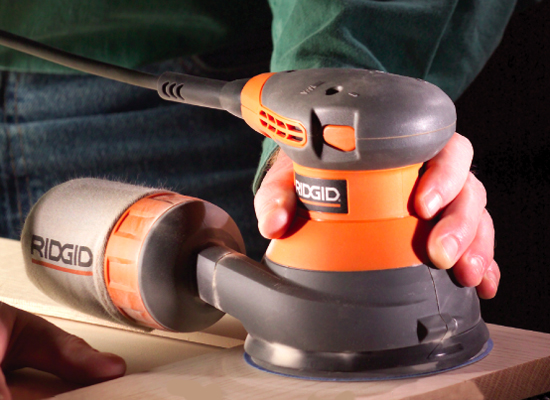 Depending on the type of drive, grinders can be divided into two groups. A distinction is made between electric and pneumatic grinders. In electrically powered devices, the driving source – electric engine – it is built in at the factory. Therefore, such devices are very handy and easy to install, especially at construction sites. Because they can be of different sizes and work at different rotational speeds, are readily used by painters and varnishers. However, with wet grinding, due to the associated risk of accidents, Only devices with a safety transformer may be used, equipped with a cut-off switch, be with a low voltage motor (voltage 42 V).
Depending on the type of drive, grinders can be divided into two groups. A distinction is made between electric and pneumatic grinders. In electrically powered devices, the driving source – electric engine – it is built in at the factory. Therefore, such devices are very handy and easy to install, especially at construction sites. Because they can be of different sizes and work at different rotational speeds, are readily used by painters and varnishers. However, with wet grinding, due to the associated risk of accidents, Only devices with a safety transformer may be used, equipped with a cut-off switch, be with a low voltage motor (voltage 42 V).
Air pressure in pneumatic driven devices, necessary for grinding, is obtained by means of a compressor. Therefore, these devices are especially useful in stationary conditions, e.g. in paint shops, where a high-power compressor is usually available anyway. By regulating the air supply, the rotational speed of the devices can be smoothly changed. Such devices can also be easily used for wet grinding. However, they are louder than with an electric drive.
Air demand, in a pneumatic grinder.
Air grinders need 250-400 l air per minute.
Depending on the nature of the movement of the grinding wheel, grinders are distinguished:
1) obrotowe i kątowe,
2) oscylacyjne,
3) taśmowe.
Rotary sanders pick up a relatively large amount of material from a small area. Therefore, they are particularly suitable for spot rust removal and stripping. Steel brush pads can be used to remove the rust. These grinders can also be equipped with stirring attachments.
For face grinding, orbital and belt sanders are especially useful.
What must be the rotational speed of orbital grinders, so that it is possible to peel off the old clearcoat from the wooden surface?
If it is not a opaque coating, when stripping a wooden surface with an orbital sander, a frequency above is required 10 000 rotations per minute.
Belt sanders are particularly suitable for sanding wooden surfaces, if no topcoat is envisaged. No traces are left when sanding in the direction of the grain, while sanding the surface in the corners is troublesome. Belt sanders and sanding belts, compared with other types of sanders and sandpaper, they are relatively expensive.